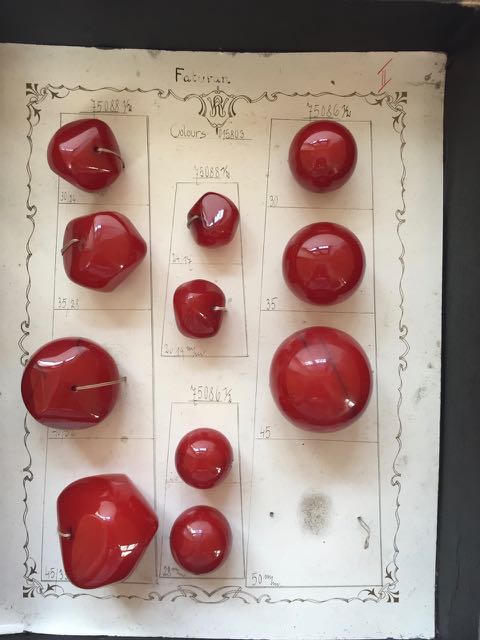| I wish I knew, really | |||||
| Re: Rosanna what is the attraction for a bead like this? -- judy | Post Reply | Edit | Forum | Where am I? | |
09/05/2017, 16:29:18
You can read a little more about Faturan's supposed history on the Wikipedia page for Faturan. Last year I met the person who provided this page to Wikipedia, and who collaborated with a (sadly now deceased) member of the Plastics Historical Society. The information about the commercial Faturan product is sound. However, I can't agree that there is any way to know if a particular phenolic bead was made from any specific formulation of phenolic resin. Even if I were to have the exact commercial formulation for all the products being produced at that time (over 300 of them), it would be an analytical chemistry nightmare to identify the cured material after the fact. Perhaps impossible to do - and hard to know how impossible until the formulations were discovered and compared.
The established fact is that Faturan was a trade name for phenolic resin made by the Heinrich Traun and Son Co. in Hamburg. This trade name is mentioned in articles and books dating to the early 1920s. Note that the first commercial phenolic resin, Bakelite, went into production in 1910. I have heard that the name Faturan may have been used from 1917 (but I don't have documentation). It is a fact that the German chemical industry was involved with producing Bakelite from 1910 onwards, and that the German (as well as Americans, French, etc) immediately began patenting and producing competitive products.
It appears that the name Faturan was based on Traun's name. This was a common practice at the time for man-made resins - for example, the phenolic resin marketed by Dr. Kurt Albert was called Alberit, and one from the Dynamit AG Company in Troisdorf was called Trolon. And of course Bakelite was patented by Leo Baekeland. You get the picture.
Further speculation is that Faturan sounds like a Middle Eastern ethnic name or term. When Faturan materials (rods, sheets, blocks, etc) began to be used in the Middle East for prayer beads, it was undoubtedly used as an amber imitation. Even today, amber-colored phenolic beads of all sizes and shapes are often simply called amber ( and especially, African amber or copal amber) by the sellers as well as the owners of the beads. It's doubtful that in the 1910-1930 timeframe, people working with phenolic resin outside of the chemical industry in Europe would have fully understood how such a man-made material was created. Thus it makes sense to me that if it looked a lot like amber (which it does before it darkens) a large number of people would think it was natural amber or some sort of material based on amber. Some of the phenolic resins were made with flecks of gold, fish scales, swirls of different shades of amber and brown, etc., and were really quite unusual and beautiful when made into beads.
Anyway, that's a long drawn-out background for my hypothesis that the bidders on this bead thought that the bead was something other than a large phenolic resin bead - and instead thought it might be a bead made from a pre-Bakelite mysterious and legendary substance. Of course there may be such a material out there and I would love to find the evidence if it really exists!
Here are some Faturan beads for comparison. Floor Kaspers kindly photographed this bead card, found in the archives of the Jablonec Glass Museum earlier this year. The card is only loosely dated by the archive as 1920s-1940s. So we have strong evidence that beads specifically made from the Faturan brand of phenolic resin were in fact produced. Where and when they were sold is unknown at the moment. I strongly suspect the original beads were amber -colored and have darkened with age. But many amber-colored phenolic resins either darken with age like this, or the color change can be accelerated with heat. See the link to my 2016 article in BEADS for more details.
https://beadresearch.org/beads-2016-journal/
In the meantime, I just don't know what else to say about the attraction to this particular specimen!

Modified by Rosanna at Tue, Sep 05, 2017, 22:25:21
All rights reserved by Bead Collector Network and its users
|